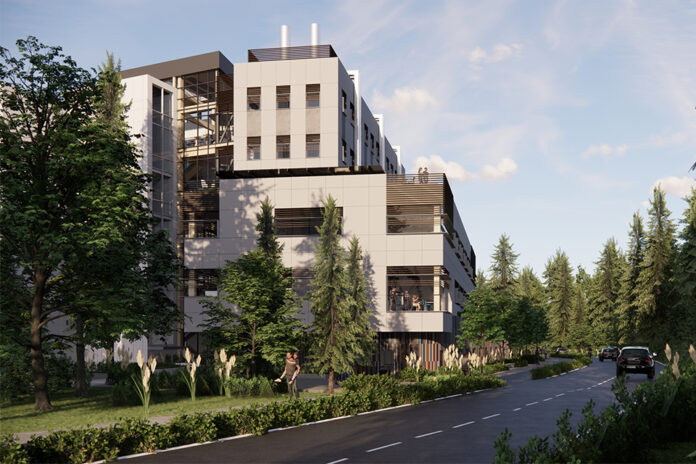CaDCR staff writer
Bird Construction Inc. has been selected as construction manager for the Vancouver Community College Centre for Clean Energy and the University of Victoria Engineering Expansion Project. The combined value of the contracts is more than $280 million.
The VCC Centre is an eight-storey, 343,832 sq. ft., LEED Gold and energy-efficient project with elements of exposed mass timber. Supporting the growing green economy, it will provide education and skills training and Red-Seal-certified apprentices of modern automotive trades, including electric, hydrogen fuel cell, plug-in and autonomous vehicles. The facility will accommodate as many as 1,400 students annually with new civic amenities, academic and collaborative design spaces, and purpose-built Indigenous gathering spaces.
“We are excited to be part of these transformative projects that align well with Bird’s purpose of bringing life to vision and creating greatness together. With a focus on LEED Gold and Net Zero Carbon Ready Designs, these projects exemplify our innovative solutions that drive a lower carbon future,” said Teri McKibbon, president and CEO of Bird. “Our team in BC has a long history of strong execution on institutional projects and a solid track record in construction management project delivery.
“We are proud to be a part of shaping the future of education and research in British Columbia and beyond.”
Stantec provided architecture, interior design, acoustics, information management as well as information technology, and mechanical, electrical, and civil engineering services for the project. The building was designing to achieve LEED and Rick Hansen Foundation Gold certifications. Two Row Architect is the Indigenous design collaborator and RJC Engineering is providing structural engineering as well as sustainability and building performance consulting.
The eight-story building will feature a cutting-edge electric/hybrid automotive shop to facilitate the servicing and maintenance of electric vehicles and clean energy training. It will also house classrooms, labs, a library and learning centre, an Indigenous gathering space, administrative offices, and various collaborative learning spaces.
Special considerations were given to Indigenous consultation and involvement in the design.“With a focus on technology and renewable resources, the new facility at VCC incorporates unique design features to enhance the learning environment for students and teaching professionals,” said Mark Travis, principal and education sector lead for British Columbia at Stantec. “We look forward to bringing a space to life that supports connection and community experience, and honors the unceded territories of the location’s First Nations.”
The UVIC Engineering expansion project includes two new academic buildings: the Engineering Computer Science Building Expansion, a six-storey, 68,180 sq. ft. building, and the High Bay Research and Structures Laboratory Building, a two-storey, 20,900 sq. ft. building. The complete UVIC Engineering Expansion project will have a Net Zero Carbon Ready Design and will target LEED Gold.
Expansion plans include a six-storey extension to the existing Engineering and Computer Science Building. The 5,906m2 mass timber extension with a green roof will include multidisciplinary instructional and research labs with highly specialized equipment and infrastructure, design studios, computer labs, faculty and graduate student office space.
An adjacent 2,253 m2 High-Bay Structures Research Lab (HBRSL) will be near the Engineering Lab Wing and will feature a three-storey space equipped with a gantry crane, a large shake table and other engineering facilities which will serve the unique needs of civil engineering research. In addition to research focused on structural testing, the HBSRL will also accommodate large-scale experiments.
Both facilities will extensively leverage mass timber structural elements, including columns, beams, and lateral bracing, and the interior spaces will be designed with the intentional selection of low-emitting materials and recycled contents.





